
Arch. Julie Anne R. Torres | Archi 211 [Tropical Design: Climate and Culture as Form-givers (Building for People: Climate, Culture, Comfort)] WS Class
Posted on April 11, 2025
Asst. Prof. Lacson and the Archi 211 WS class from the College of Architecture conducted their academic field activity (AFA) at the National Museum of Natural History (NMNH) in Manila last March 12, 2025. This is in preparation for the research paper and case study in Bali, Indonesia. The goal of the case study is to examine the design, sustainability, and other related considerations in the context of Tropical Design.
This was our first face-to-face meeting, and our call time was 9:30 AM in the museum’s lobby. Then, 10:00 am was the official start of the tour. The NMNH representative introduced the basic information of said museum, and while light streamed inside the courtyard, we took a class picture; thus, the portrait produced a natural effect (see Figure 1). We were encouraged to ride the elevator at the center of Tree of Life and to start the tour from a top-to-bottom approach or upper-to-lower floor to reflect the journey from the highest mountains to the deepest seas.
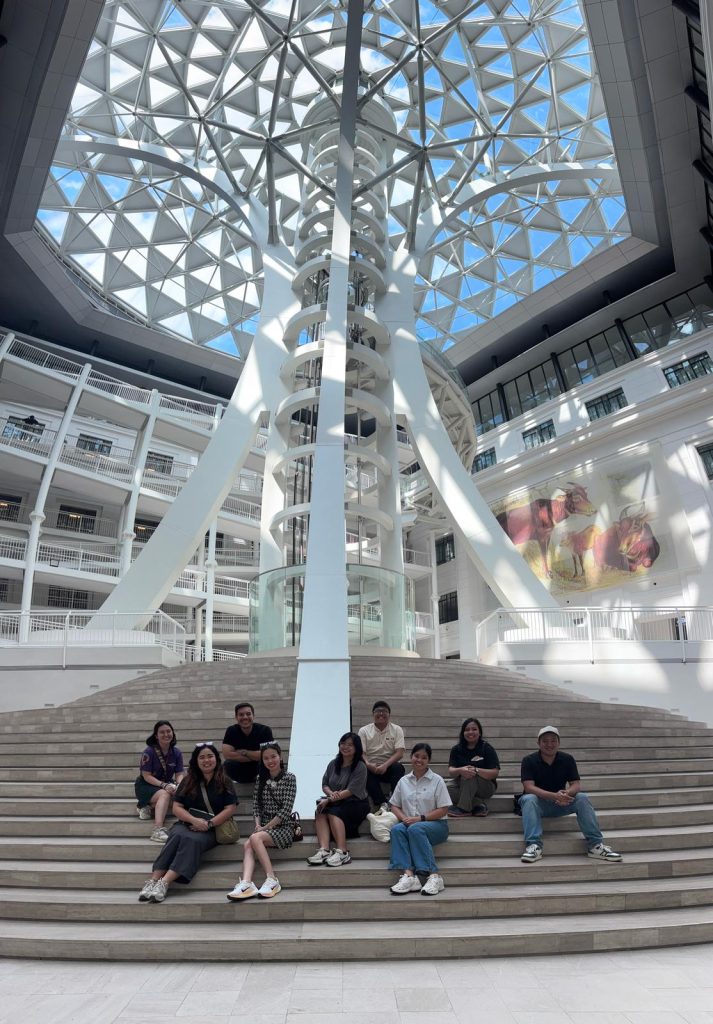
The fifth floor emphasizes the land, namely the “Philippine Biodiversity,” as shown in Figure 2, which presents flora & fauna and one of Lolong’s replicas, “The Geology of the Philippines,” “Minerals & Energy Resources,” and in Figure 3 some petrified woods were displayed in the “Life Through Time.” The fourth floor shows forests such as “Mossy, Montane, and Pine Forests,” “Tropical Lowland Evergreen Rainforests,” “Ultramafic and Limestone Karst Forests,” where another discussion took place (see Figure 4), and “Freshwater Wetlands.” We walked on the ramp after going to galleries per floor as we descended to the lower levels (see Figure 5).
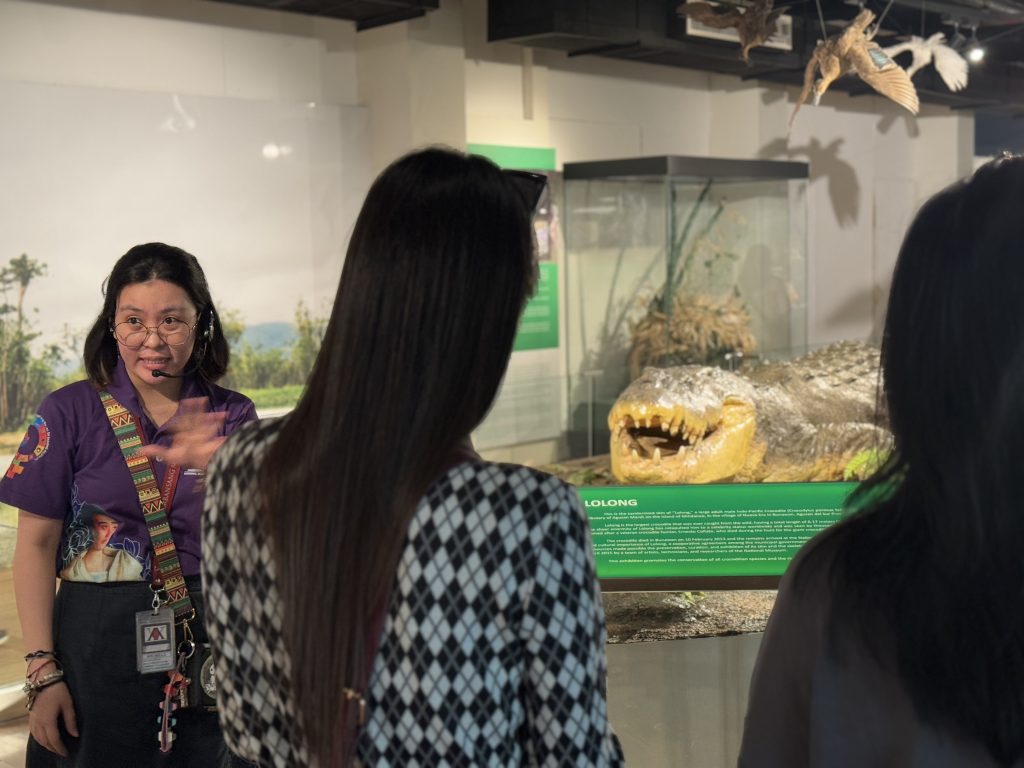
Gallery with Lolong’s replica
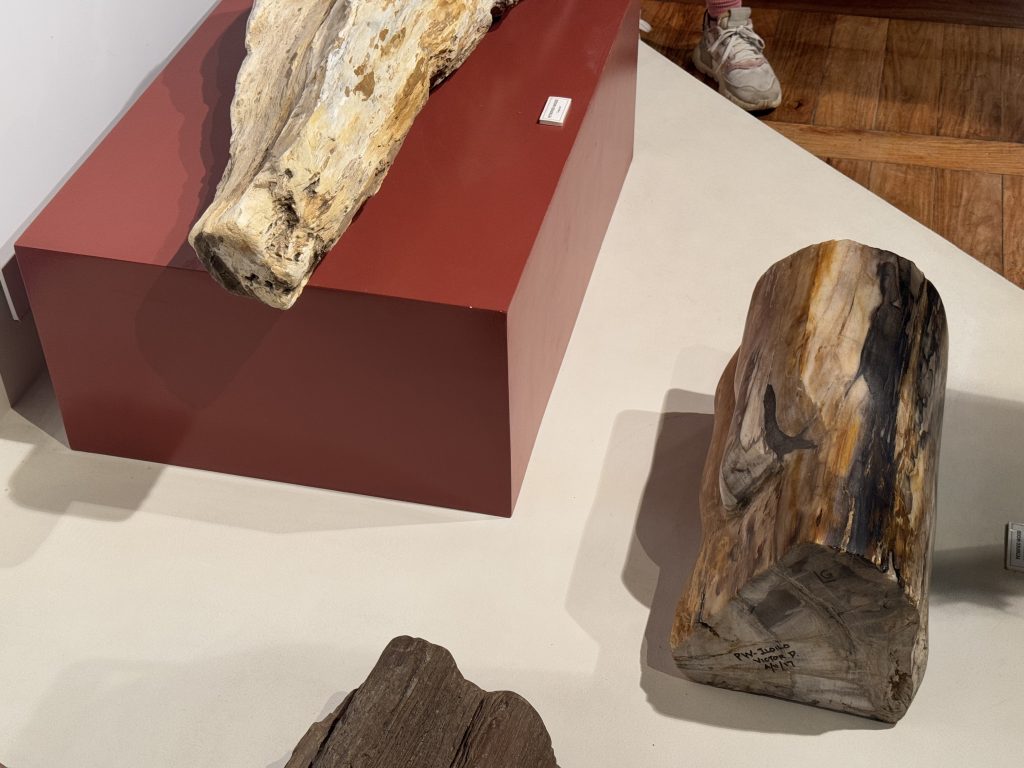
Life Through Time Gallery
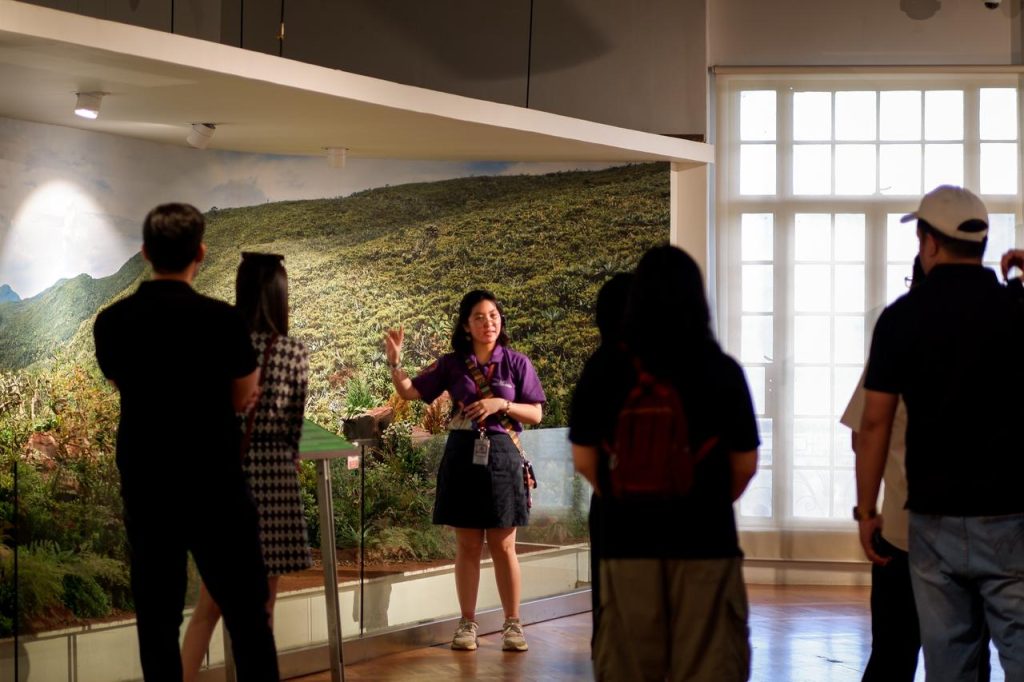
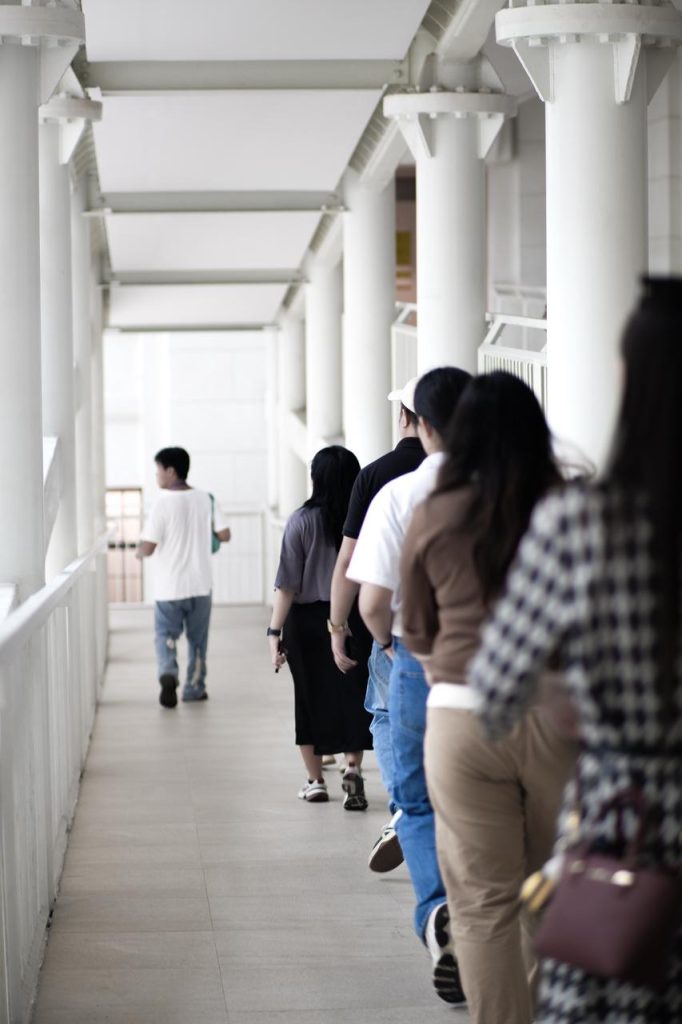
The third floor presents a theme of marine life or aquatic beings under the sea or ocean specifically, ”Mangroves, Beaches and Intertidal” and “The Marine Realm.” The 2nd said exhibit mounts a life-size submarine with portholes revealing marine creatures and underwater scenes, a hanging whale shark, hanging manta rays, and numerous specimens submerged in glass jars standing on a curved station (see Figures 6 & 7). Most galleries have air-conditioning systems that are necessary for the preservation of all kinds of objects, and each window is covered with a shading device to stress the illumination of track lighting to the exhibits.
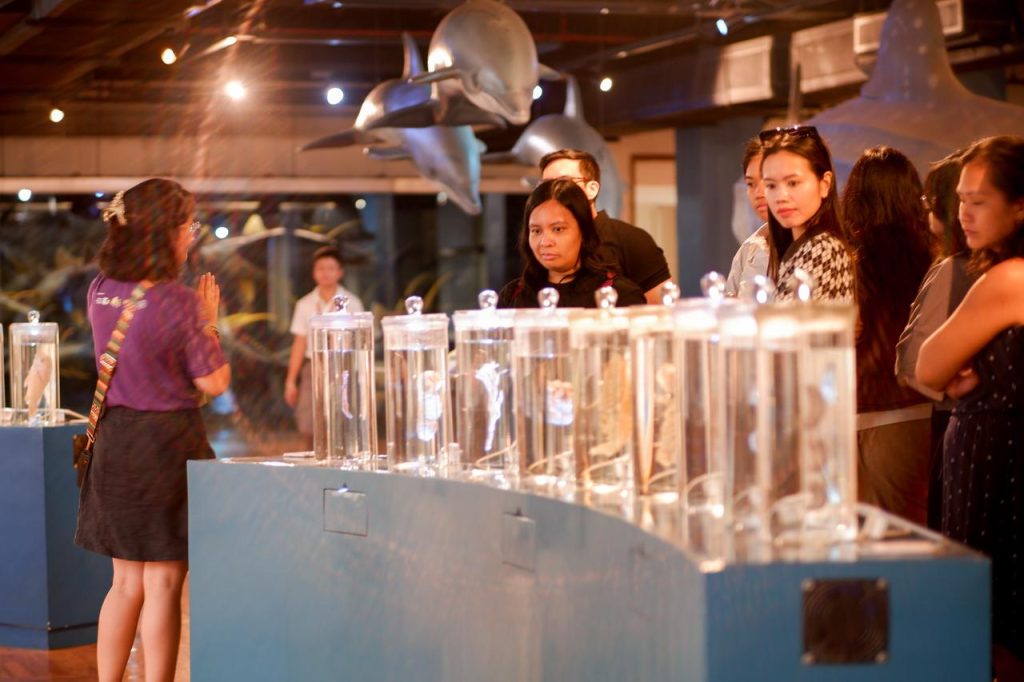
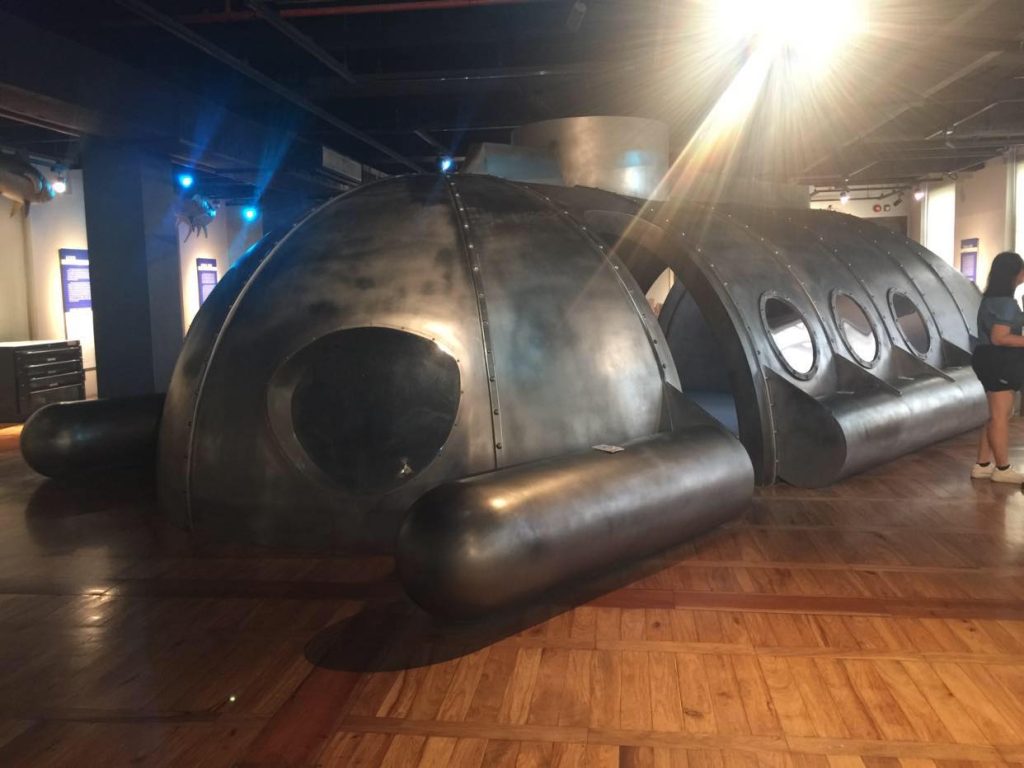
The tour formally ended in almost 2 hours on the ground floor with a discussion, a group photo with a hanging skeleton from the ceiling, and a mini dialogue about the Philippine Eagle. The eagle was named in honor of the National Museum’s 1st director, Ms. Gemma Cruz Araneta (see Figures 8-10). It was originally called the “Monkey-Eating Eagle” and was later changed by Presidential Proclamation No. 1732 by the late President Ferdinand E. Marcos on May 8, 1978. We bought many takeaways from learning and preserving various collections, rich biodiversity, and the ecological heritage of NMNH.

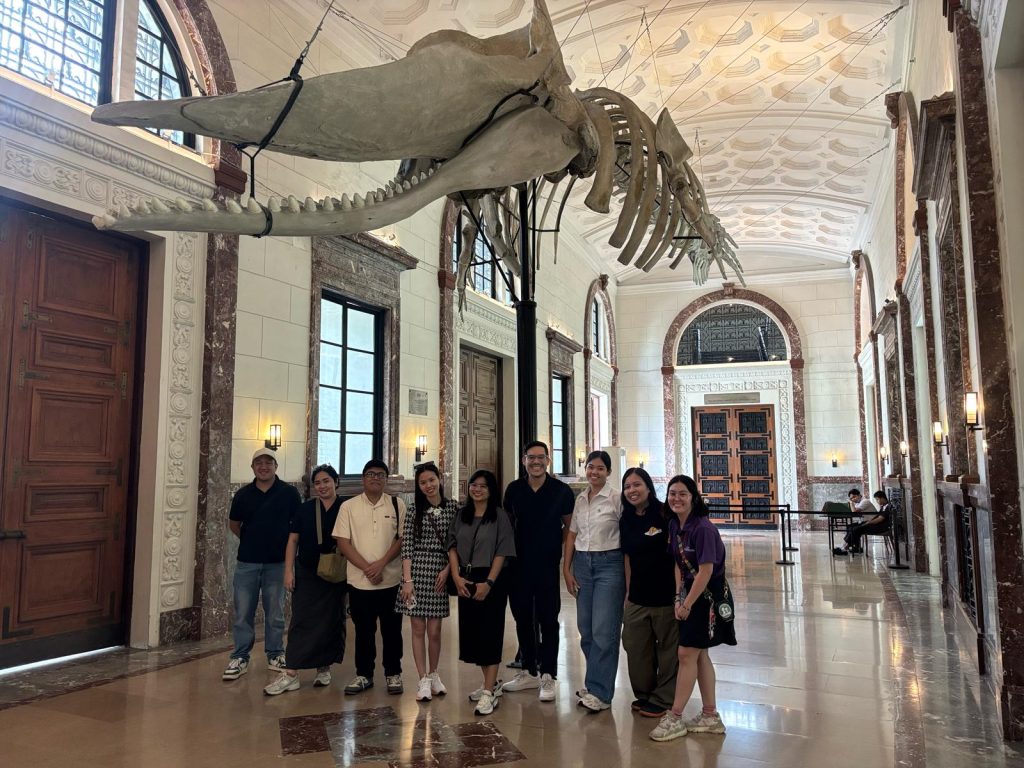
NMNH’s architecture is a timeless design that seamlessly connects the past and present, offering a truly rewarding experience. We returned to the museum’s lobby and took a selfie with the building before leaving (see Figure 11). In conclusion of the AFA, we went to Wai Ying in Binondo for lunch, took an extra selfie before eating (see Figure 12), and happily parted ways before going home.
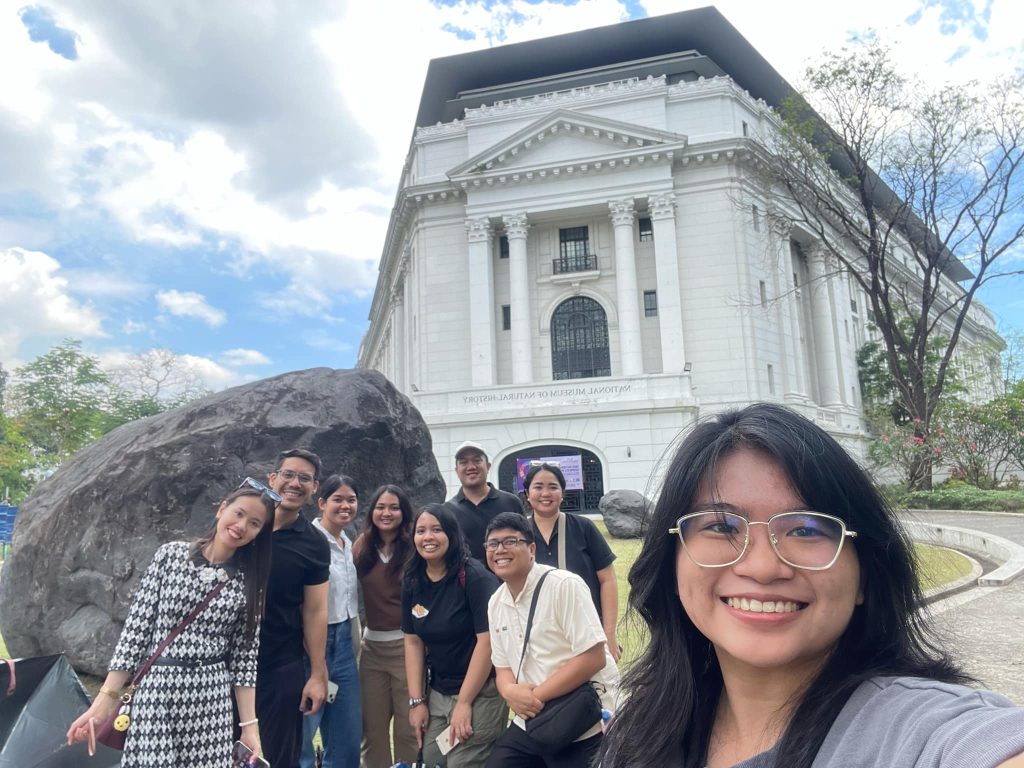
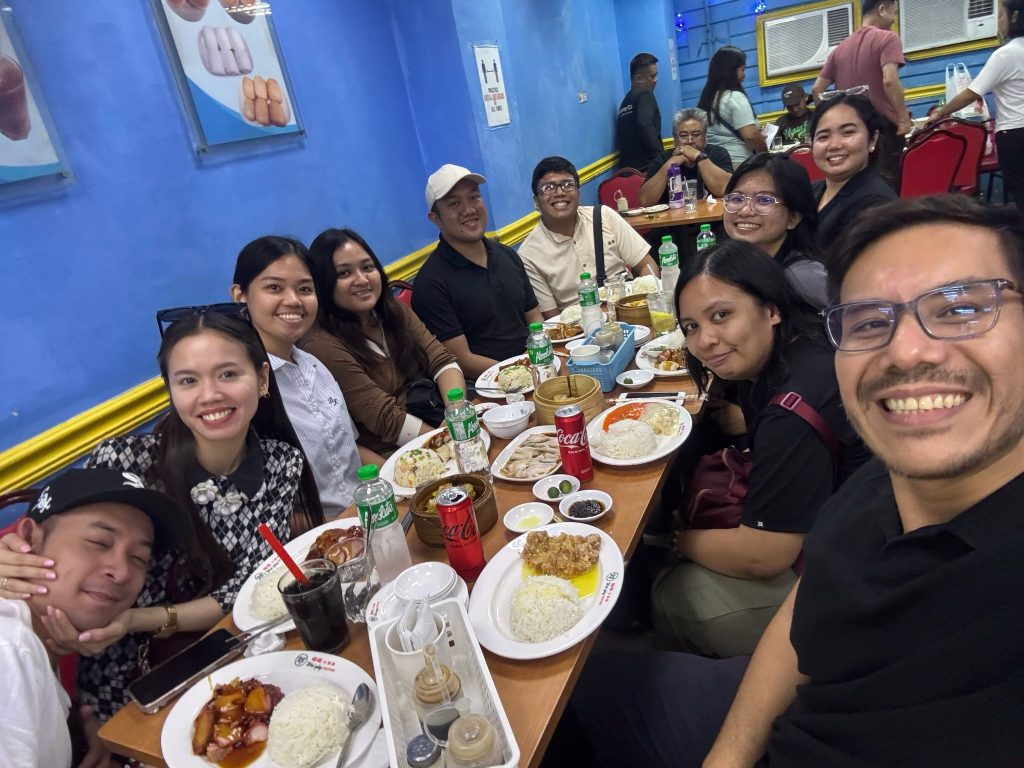
Julie Anne R. Torres is a licensed architect currently taking Master of Architecture (M.Arch) under the Building Science Studio Laboratory (BSSL) at the UPCA IGP.
